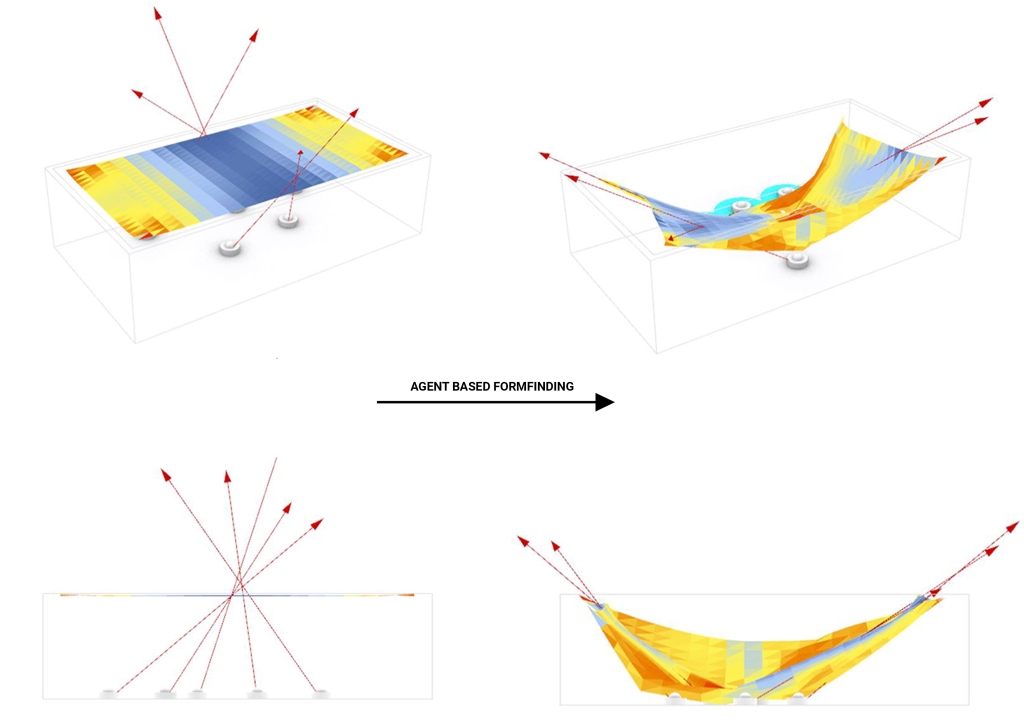
AGENT BASED EXPLORATIONS FOR FORM-FINDING OF FABRIC FORMWORK
Anand Shah, Cody Tucker, Xiliu Yang
An Agent based form-finding process was developed as a part of seminar subject, Computational Design and Digital Fabrication at ITECH course, University of Stuttgart. Fabric due to its flexible nature provides great potential as formwork to cast concrete shells. The project proposes a form-finding method for fabric-formwork by incorporating structural behavior in a bottom-up manner
Boid-agents are provided custom locomotion and actuation behavior to react to different structural conditions for shell mesh geometry, whereas mesh-face agents are used to store structural data. The aforementioned agent system share data through custom data fields, moderated by a solver object. A structural requirement (here, deformation) is set as a threshold to stop the solver. Physics based solver is used to simulate the fabric and Finite Element Analysis is used to derive structural information in order to guide the Boid-agents.
Locomotion behavior for Boid-agents include two main parts: First, standard flocking and containment behaviors helps to simulate “wandering” and second, attraction behaviors informed by local structural values (here, principal bending moments) help to guide the Boid-agents to structurally critical areas. A variety of attraction logics were explored to study the effects of Boid-agents autonomy in target selection. The chosen attraction behavior in the current system provides Boid-agents with a mild level of autonomy by allowing them to select from a range of targets within their proximity. The actuation behavior translates structural values obtained from the mesh system into normalized forces which are used to form-find (deform) the mesh at the Boid-agent’s current location. Each Boid-agent thus adjusts its behavior based on its neighbors’ states to achieve a more even global result. The actuation behavior is derived with the intention of generating new forms while maintaining global structural stability.
The model generates a rich variety of forms within a permissible structural criterion specified by the designer. By varying support conditions, fabric topology and strength, actuation force range, structural value types, a wide range of design outcomes are possible.



